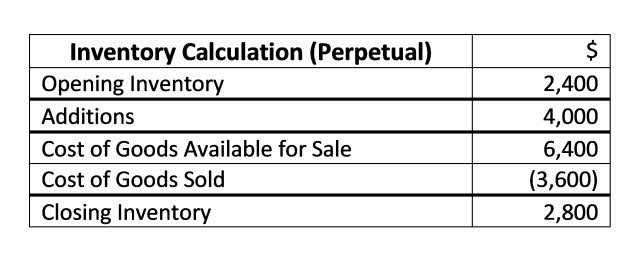
Companies can leverage this data to fine-tune their strategies, ensuring decisions are responsive to customer needs and market dynamics. Employing techniques such as kaizen or agile methodology encourages https://www.bookstime.com/ continuous improvement and flexibility within decision-making processes. This environment is characterized by clear team dynamics and a collective expertise that’s geared towards strategic outcomes.
Decision Matrix

The S.P.A.D.E framework offers a systematic approach to decision-making that enhances transparency, stakeholder engagement, and the quality of decisions made within organizations. By following each phase diligently, decision-makers can navigate complexities, mitigate decision making framework risks, and achieve outcomes that contribute to organizational success and sustainability. Using a structured decision making framework can help overcome common challenges in decision making, such as information overload, analysis paralysis, and cognitive biases.
OKRs (Objectives and Key Results)
- In making strategic decisions, it is essential to understand the value at stake of going down one path versus another, along with the costs, synergies, and risks.
- By nature, vision statements are aspirational and forward-thinking, but they need specifics in order to be realized.
- Relying on a framework for every single decision is overkill; they should be reserved for important decisions that impact a large swath of the organization.
- Ideally, your strategy will check off all the criteria above—however, it’s more likely you’ll have to find a compromise.
Decision MatricesMany decisions are multi-variable, with multiple dimensions to consider when evaluating options. The key is properly defining the dimensions, importance weighting, and scoring criteria. Opportunity CostOpportunity cost is one of the most essential concepts in strategic decision-making in your role, business, and life.
Strategy-Making in Turbulent Times
We often find companies maintaining a dozen or more senior-executive-level committees and related support committees, all of which recycle the same members in different configurations. The impetus for this is understandable—cross-cutting decisions, in particular, are the culmination of smaller decisions taking place elsewhere in the company. And cross-cutting decisions were the ones that executives in our survey had the most exposure to, regardless of their seniority. Whether the cause of such dynamics is siloed thinking or a consensus-driven culture (of which, more later), the effect on decision making is decidedly negative.

This is how effective teams navigate the decision-making process
For these decisions, executives need more than an ability to avoid common biases. They require a talent for clear-eyed analysis and the ability to take bold action. It’s essential that they possess a robust decision-making process that involves thorough market analysis and evaluation of product development strategies. These managers often rely on data to inform decisions that shape product roadmaps and prioritize features. But many of the decisions that shape the future of organizations require time-consuming deliberation, analysis, and the balancing of multiple considerations. Such decisions cannot easily be “quality checked.” To improve them, we must work on the processes by which they are made.
Scalable decision frameworks

Worst because organizational dynamics and digital decision-making dysfunctions were causing growing levels of frustration among senior leaders we knew. After enjoying nearly a decade of economic growth, engineering and construction (E&C) organizations have had to revamp their priorities quickly. That means moving beyond traditional strategic planning, which assumes a relatively known or static future and doesn’t work in times of continual disruption. As any business leader whose operations survived a prior industry shakeout can attest, times aren’t easy right now. This is normalcy bias (i.e., wishing the present away long enough for things to return to normal).
- Entities equipped with these analytical tools are capable of forecasting trends with greater accuracy, thus refining their decision-making processes.
- These examples illustrate the range of strategic decisions that businesses may face.
- In this article the authors offer a new approach and mindset for making strategic decisions, along with a new model for managing strategy development and performance monitoring.
- A strategy map is a visual representation of the relationships that directly impact your business strategy.
- The model you choose can improve your knowledge of what works best in your organization, uncover unknown strengths and weaknesses, or help you find out how you can outpace your competitors.
THE LEADERSHIP MATURITY MODEL
If it’s your first strategic planning session, the basic model is the way to go. Later on, you can embellish it with other models to adjust or rewrite your business strategy as needed. Let’s take a look at what kinds of businesses can benefit from this strategic planning model and how to apply it. In this article, we cover the most common strategic planning models and frameworks and explain when to use which one. Plus, get tips on how to apply them and which models and frameworks work well together. Your strategic planning will start by identifying a goal and analyzing which operations or resources need to be aligned with that goal.
Making smart decisions about the decision-making process
Conceptualizing what a negotiation is, how it works, what the goals are, and what skills you can improve is a great way to start getting better at the life skill of negotiation. Cost-Benefit AnalysisUltimately decisions come down to some sort of value equation. What trips up most people is truly understanding the totality of hard and soft benefits and costs in a decision. Improving your ability to see the big picture and not leave out any significant costs and benefits will serve you well in your career. The theory of constraints (TOC) is a problem-solving framework that can help you identify limiting factors or bottlenecks preventing your organization from hitting OKRs or KPIs.

See ClearPoint Strategy in action! Click here to schedule a FREE 1:1 demo.
Companies that avoid a nearsighted view and take a holistic view of new market opportunities will be best positioned to succeed in 2021 and beyond. Other frameworks (like SWOT or PESTLE) can be useful in developing those scenarios. There are many ways you can create a Balanced Scorecard, including using a program like Excel, Google Sheets, or PowerPoint or using reporting software. Ted is a Founder and Managing Partner of ClearPoint Strategy and leads the sales and marketing teams. Let us look at a few strategic decision-making examples to understand the concept better.